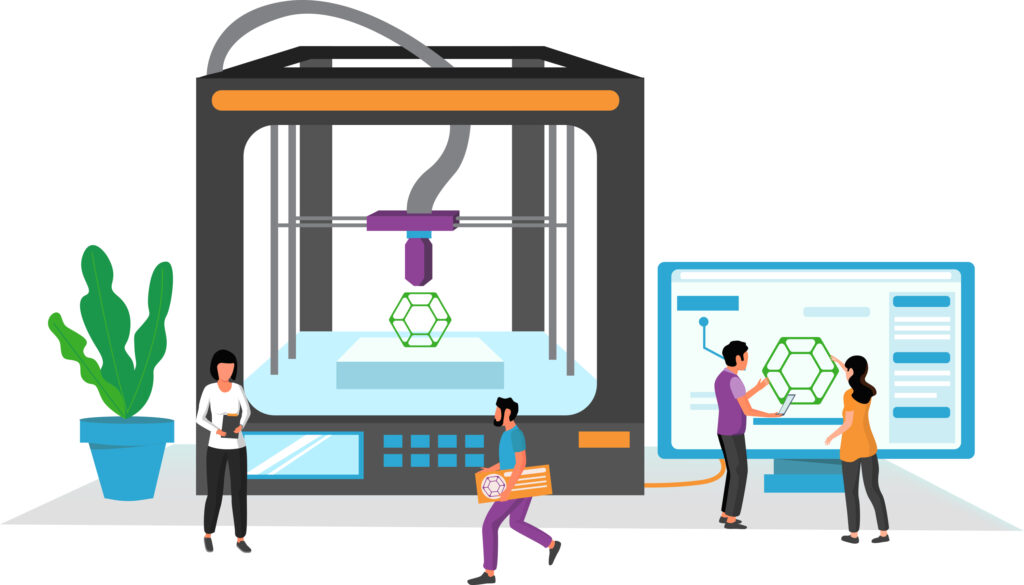From auto parts to zippers and much in between, 3D printing is revolutionizing manufacturing. This innovative process uses digital models for design and creates three-dimensional outputs by layering materials upon each other. 3D printing transforms manufacturing by providing enhanced efficiency and flexibility compared to traditional mold-based manufacturing processes. With ample benefits, it’s no surprise that 71% of surveyed businesses reported increased use of 3D printing in 2022 compared to 2021.1 Below, we’ll explore the benefits that 3D printing offers manufacturers.
Increase Customization
One of 3D printing’s most significant benefits is building customized products with minimal added production costs. Traditional manufacturing methods typically produce a massive quantity of a single object. Creating custom items isn’t financially feasible when profits are highly dependent on deploying economies of scale. Comparatively, 3D printing allows for individual customization without altering the production process. Manufacturers can develop bespoke products for specific customer needs, such as personalized prosthetic limbs or customized car components.
Improve Time to Market
In contrast to traditional manufacturing processes, 3D printing can significantly reduce the time it takes to bring a product from ideation and design to market. Based on software and advanced machinery, 3D printing helps accelerate or eliminate many steps involved in traditional manufacturing methods. With 3D printing, a digital model can come to life in our physical plane in just a few hours. Many manufacturers find this rapid prototyping extremely valuable, as the prototyping segment accounted for 54% of global 3D printing revenue in 2023.2
Enhance Cost-Effectiveness
Following conventional manufacturing methods, the cost of producing small-batch items can be prohibitively high due to specialized molds and one-off processes. 3D printing removes these cost and operational barriers, enabling manufacturers to more easily create small quantities of items that serve niche audiences. By better controlling costs, small and medium-sized businesses can offer a wide variety of products for many segments without substantial upfront investment in production infrastructure.
Promote Sustainability
3D printing can be a significant boon toward achieving sustainability, as 41% of surveyed businesses claim additive manufacturing is helping them reach their sustainability objectives.3 Traditional manufacturing methods can inefficiently use resources, often cutting or carving materials, leading to significant waste byproducts. 3D printing is an additive process that builds objects layer by layer and only uses the necessary materials. This efficiency reduces waste and minimizes a manufacturer’s carbon footprint.
Reduce Operational Costs
The ability to produce objects on-demand with 3D printing is an operational game-changer for manufacturers. Instead of manufacturing and storing extensive inventories, businesses can create products as needed, which helps lower storage costs and minimize the risk of overproduction. This shift toward just-in-time production helps manufacturers better satisfy customer demands for quick delivery while reducing supply chain complexity and operational overhead.
3D printing is transforming the manufacturing landscape. Its ability to offer customization, reduce production time and costs, and promote sustainability makes it an indispensable part of modern manufacturing. As technology advances and entry costs diminish, 3D printed products should increasingly deliver immense benefits and value to manufacturers across numerous verticals.
- Protolabs, Market Insights and Forecasts for 3D Printing Trends in 2023, 2023.
- Grand View Research, 3D Printing Market Size, Share & Trends Analysis Report By Component, 2023.
- Sculpteo, The State of 3D Printing Report: 2022, November 2022.
